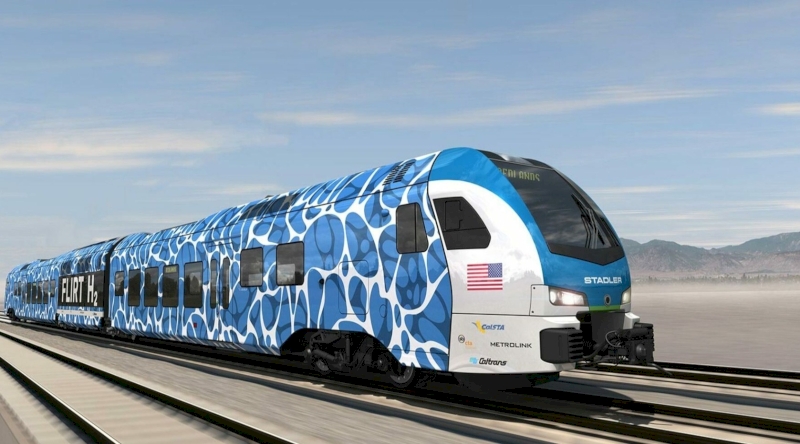digitalWorld

The hydrogen train that breaks all records
A hydrogen train arrives that breaks all records. It has proven to be able to run for 50 hours with an autonomy never seen before in history. In the context of energy transition and decarbonization of the economy in which we find ourselves.
Let us remember that the train was previously used to transport coal from the mine to the factories. Later, it became relevant and today it is used to carry and bring passengers.
The long-awaited hydrogen train has already arrived and has demonstrated an incredible ability to operate without refueling. Nothing more and nothing less than 2,800 kilometers. The H-powered fuel cell train bears the seal of Swiss manufacturer Stadler and ran for almost two days.
An achievement that not only highlights the potential of H as a source of clean energy, but also as a new world record in sustainable mobility. Stadler announced the entry into the Guiness World Records database, with the longest distance traveled: 2,803 kilometers (1,741.7 miles).
It should be noted that it was a hydrogen-powered passenger train without refueling or loading fuel. The Flirt H2 train, powered by H fuel cells, has set a new standard in rail transport by traveling 2,800 kilometers without requiring refueling.
This was extended for almost two days and demonstrates the efficiency and viability of the H on trains. A suitable way to leave aside fossil fuels.
Flirt H2 comes to the industry as a result of a strong commitment to innovation. It was presented for the first time in 2022, within the framework of the Innotrans fair in Berlin. This is an adaptation of the Flirt model, designed for regional and commuter service.
It has two electric motor cars and an intermediate car, 108 seats and additional space for standing passengers. The Flirt H2 resides in its middle car called the Powerpack, which houses the fuel cells and H tanks.
These fuel cells convert H into electricity, powering the train's engines and storing additional energy in its traction batteries.
- Hydrogen, the fuel of the future
Initially, it was a development for the San Bernardino County Transportation Authority in California to work in extreme conditions, with ambient temperatures of up to 49 degrees Celsius. This record shows Stadler's commitment to innovation and sustainability, as well as the incredible potential of hydrogen as a fuel of the future.
In short, the hydrogen train has broken all records with an autonomy never seen before and 50 hours running. Merging H and an electric motor in a super-renewable car was shocking news, but this train is something never seen before.
Multimedia
Smart & Green Fundazioa Summer Courses from UPV/EHU

What are you waiting for? Sign up
Blockchain Conference La Rioja









